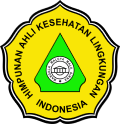EFEKTIVITAS EKSTRAK DAUN PANDAN WANGI (Pandanus amaryllifolius) SEBAGAI BIOLARVASIDA TERHADAP LARVA Culex Sp.
DOI:
https://doi.org/10.26630/rj.v15i3.3067Keywords:
Biolarvasida, Culex sp, Pandanus amaryllifolius, konsentrasi, waktu kontakAbstract
Penggunaan pestisida kimia dapat menimbulkan efek toksik bagi manusia, lingkungan maupun serangga non target. Penelitian bertujuan untuk menganalisis efektifitas ekstrak daun pandan wangi (Pandanus amaryllifolius) terhadap kematian larva Culex sp instar-III. Eksperimen menggunakan rancangan acak lengkap factorial dengan dua kali ulangan, pada empat level konsentrasi dan lima level waktu kontak. Larva dikembangkan dari daerah pemukiman melalui proses rearing dua tahap. Uji bioassay dilakukan pada setiap perlakuan sebanyak 25 ekor. Hasil penelitian membuktikan bahwa konsentrasi bepengaruh terhadap kematian larva (p-value=0,000), demikian pula lama waktu kontak (p-value=0,003), serta interaksi konsentrasi dan waktu kontak (p-value = 0,00001). Konsentrasi menunjukkan asosiasi yang lebih kuat (88,3%) dibandingkan waktu kontak (75,3%) dan interaksi konsentrasi dan waktu kontak (78,5%). Nilai LC50 diperoleh sebesar 1,72%. Penelitian telah membuktikan bahwa ekstrak daun Pandanus amaryllifolius dapat digunakan sebagai biolarvasida terhadap larva Culex sp. Perlu penelitian lanjutan untuk mengetahui pengaruh terhadap serangga non target, bentuk sediaan ekstrak siap pakai, serta perbandingan dengan bioinsectisida lainnya.References
Adibah, A., & Dharmana, E. (2017). Larvicidal Effectiveness Test of Boiled Betle Leaf (Piper betle L.) Against Aedes aegypti Larvae : Studies in Value of Lc50, Lt50, and The Rate of Larvae Mortality. Diponegoro Medical Journal, 6(2), 244–252.
Alves, S. N., Serrão, J. E., & Melo, A. L. (2010). Alterations in the fat body and midgut of Culex quinquefasciatus larvae following exposure to different insecticides. Micron, 41(6), 592–597. https://doi.org/10.1016/j.micron.2010.04.004
Benelli, G., & Beier, J. C. (2017). Current vector control challenges in the fight against malaria. Acta Tropica, 174, 91–96. https://doi.org/10.1016/j.actatropica.2017.06.028
Chaieb, I. (2017). Saponins as Insecticides : A Review Saponins as Insecticides : a Review, Tunisian. Journal of Plant. Protection, 5(1), 39–50.
Ekawasti, F., & Martindah, E. (2017). Vector Control of Zoonotic Arbovirus Disease in Indonesia. Indonesian Bulletin of Animal and Veterinary Sciences, 26(4), 151. https://doi.org/10.14334/wartazoa.v26i4.1402
Hidayati, L., & Suprihatini, S. (2020). Pengaruh Pemberian Ekstrak Biji Mahoni (Swietenia mahagoni) Terhadap Kematian Larva Culex sp. ASPIRATOR - Journal of Vector-Borne Disease Studies, 12(1), 45–52. https://doi.org/10.22435/asp.v12i1.2171
Indriyani, I., Rahmayani, I., & Wulansari, D. (2019). Upaya Pengendalian Hama Gudang Sitophilus oryzaeL.Dengan Penggunaan Pestisida Nabati. Jurnal Ilmiah Ilmu Terapan Universitas Jambi|JIITUJ|, 3(2), 126–137. https://doi.org/10.22437/jiituj.v3i2.8196
Kasma, A. Y., Ridjal, A. T. M., & M, R. (2019). Efektivitas Ekstrak Daun Pandan Wangi (Pandanus amaryllifolius) Terhadap Mortalitas Larva Aedes sp dan Anopheles. Jurnal Vektor Penyakit, 13(2), 107–114. https://doi.org/10.22435/vektorp.v13i2.465
Kim, S. Il, & Ahn, Y. J. (2017). Larvicidal activity of lignans and alkaloid identified in Zanthoxylum piperitum bark toward insecticide-susceptible and wild Culex pipiens pallens and Aedes aegypti. Parasites and Vectors, 10(1), 1–10. https://doi.org/10.1186/s13071-017-2154-0
Kusuma, R. D., Sumbono, A., & Istiqomah. (2020). Identifikasi Toksisitas Larutan Smilax Sp Terhadap Perilaku Larva Culicidae. Biolearning Journal, 7(2), 40–48. https://doi.org/https://doi.org/10.36232/jurnalbiolearning.v7i2.557
Mutiasari, D., & Kala’Tiku, L. L. B. T. (2017). Uji Efektifitas Ekstrak Daun Pandan (Pandanus amaryllifolius Roxb .) Sebagai Larvasida Alami Terhadap Larva Aedes aegypti. Kesehatan Tadulako, 3(2), 31–39. https://doi.org/https://doi.org/10.22487/htj.v3i2.48
Ningsi, E., Yuniar, N., & Fachlevy, A. (2016). Efektivitas Uji Daya Bunuh Ekstrak Daun Pepaya (Carica Papaya L.) Terhadap Larva Nyamuk Anopheles Aconitus Donits Dalam Upaya Pencegahan Penyakit Malaria Di Daerah Persawahan Desa Lalonggombu Kecamatan Andoolo Kabupaten Konawe Selatan. Jurnal Ilmiah Mahasiswa Kesehatan Masyarakat Unsyiah, 1(3), 183424.
Pahlepi, R. I., Santoso, S., Mahdalena, V., & Marini, M. (2020). Culex vishnui Sebagai Vektor Filariasis Potensial di Kabupaten Kuantan Singingi, Provinsi Riau. ASPIRATOR - Journal of Vector-Borne Disease Studies, 12(1), 1–10. https://doi.org/10.22435/asp.v12i1.3040
Pavela, R. (2015). Acute toxicity and synergistic and antagonistic effects of the aromatic compounds of some essential oils against Culex quinquefasciatus Say larvae. Parasitology Research, 114(10), 3835–3853. https://doi.org/10.1007/s00436-015-4614-9
Pratama, S. D., & Yushananta, P. (2021). Efektivitas Ekstrak Kulit Batang Maja (Aegle marmelos L) Terhadap Kematian Larva Nyamuk Anopheles sp. Ruwa Jurai: Jurnal Kesehatan Lingkungan, 15(2), 67. https://doi.org/10.26630/rj.v15i2.2813
Puspa Sari, M., & Priastini Susilowati, R. (2019). Efektivitas Ekstrak Daun Maja (Aegle marmelos (L) Corr) sebagai Larvasida Aedes aegypti. YARSI Medical Journal, 27(1), 001. https://doi.org/10.33476/jky.v27i1.797
Ramadhani, T., Yuliani, V., Hadi, U. K., Soviana, S., & Irawati, Z. (2019). Tabel Hidup Nyamuk Vektor Filariasis Limfatik Culex quinquefasciatus (Diptera: Culicidae) di Laboratorium. JURNAL KESEHATAN LINGKUNGAN INDONESIA, 18(2), 73. https://doi.org/10.14710/jkli.18.2.73-80
Sampe, V., & Watuguly, T. (2016). Efektivitas Ekstrak Biji Pangi (Pangium edule Reinw) Terhadap Mortalitas Larva Nyamuk Anopheles. BIOPENDIX: Jurnal Biologi, Pendidikan Dan Terapan, 2(2), 152–159. https://doi.org/10.30598/biopendixvol2issue2page152-159
Senthil-Nathan, S. (2020). A Review of Resistance Mechanisms of Synthetic Insecticides and Botanicals, Phytochemicals, and Essential Oils as Alternative Larvicidal Agents Against Mosquitoes. Frontiers in Physiology, 10. https://doi.org/10.3389/fphys.2019.01591
Syam, I., & Pawenrusi, E. P. (2017). Efektifitas Ekstrak Buah Pare(Momordica charantia) Dalam Mematikan Jentik Aedes aegypti. Jurnal Kesehatan Masyarakat Andalas, 10(1), 19. https://doi.org/10.24893/jkma.v10i1.158
Tennyson, S., Ravindran, K. J., & Arivoli, S. (2012). Screening of twenty five plant extracts for larvicidal activity against Culex quinquefasciatus Say (Diptera: Culicidae). Asian Pacific Journal of Tropical Biomedicine, 2(2), S1130–S1134. https://doi.org/10.1016/S2221-1691(12)60372-4
Triwahyuni, T., Husna, I., Febriani, D., & Karim, L. I. (2021). Efektivitas Ekstrak Daun Pandan Wangi (Pandanus Amaryllifolius) Terhadap Daya Tahan Larva Anopheles Sp. Manuju: Malahayati Nursing Journal, 3(3), 413–425.
Wardani, N. P. I. P. P., Adiputra, I. G. K., & Suardana, A. A. K. (2020). Efektivitas Repelensi Serbuk Daun Pandan Wangi (Pandanus amaryllifolius Roxb) Terhadap Kutu Beras (Sitophilus oryzae L) Pada Beras Merah (Oryza nivara). Jurnal Widya Biologi, 11(01), 30–40. https://doi.org/10.32795/widyabiologi.v11i01.568
WHO. (2005). Guidelines for laboratory and field testing of mosquito larvicides. In World Health Organization.
Yushananta, P., & Ahyanti, M. (2021). The effectiveness of betle leaf (Piper betle L.) extract as a bio-pesticide for controlled of houseflies (musca domestica L.). Open Access Macedonian Journal of Medical Sciences, 9, 895–900. https://doi.org/10.3889/oamjms.2021.6886
Yushananta, P., Ahyanti, M., & Anggraini, Y. (2020). Risk of pesticides on anaemia events in horticulture farmers. International Journal of Innovation, Creativity and Change, 13(2), 30–40.
Downloads
Published
How to Cite
Issue
Section
License
Copyright (c) 2022 Ruwa Jurai: Jurnal Kesehatan Lingkungan

This work is licensed under a Creative Commons Attribution-NonCommercial 4.0 International License.

Ruwa Jurai: Jurnal Kesehatan Lingkungan is licensed under a Creative Commons Attribution-NonCommercial 4.0 International License.
Authors who publish with this journal agree to the following terms:
- Authors retain copyright and grant the journal right of first publication with the work simultaneously licensed under a Creative Commons Attribution-Non Commercial License that allows others to share the work with an acknowledgment of the work's authorship and initial publication in this journal.
- Authors are able to enter into separate, additional contractual arrangements for the non-exclusive distribution of the journal's published version of the work (e.g., post it to an institutional repository or publish it in a book), with an acknowledgment of its initial publication in this journal.
- Authors are permitted and encouraged to post their work online (e.g., in institutional repositories or on their website) prior to and during the submission process, as it can lead to productive exchanges, as well as earlier and greater citation of published work.









